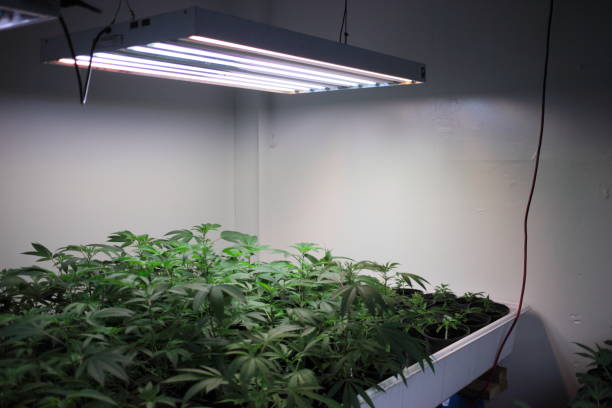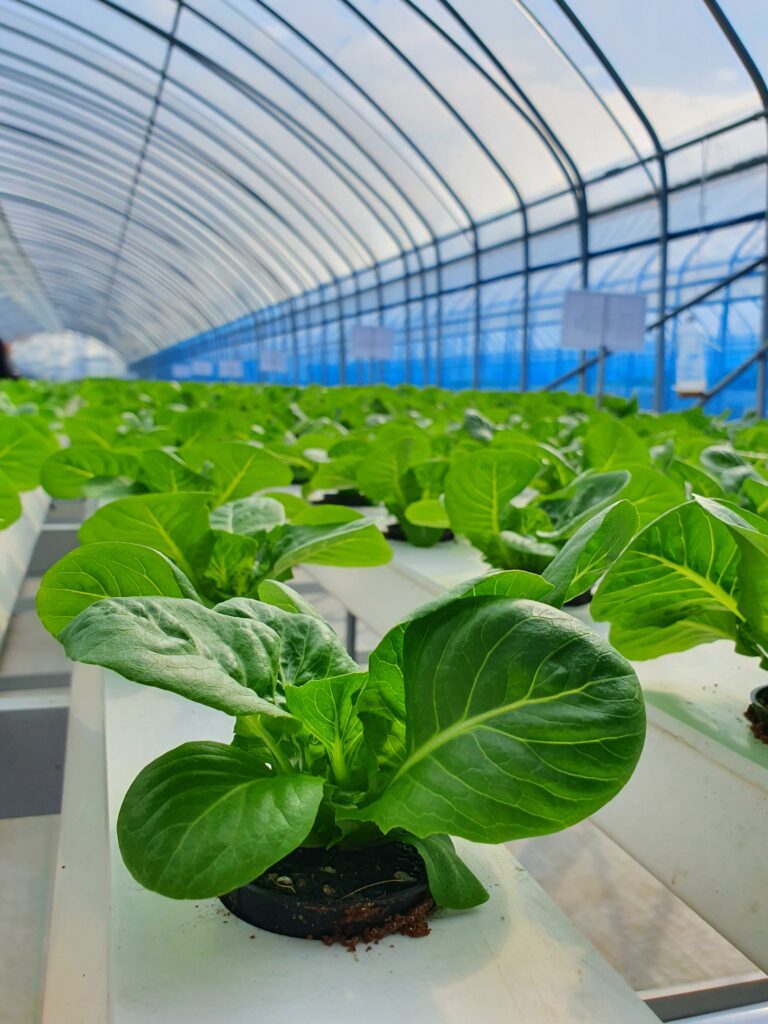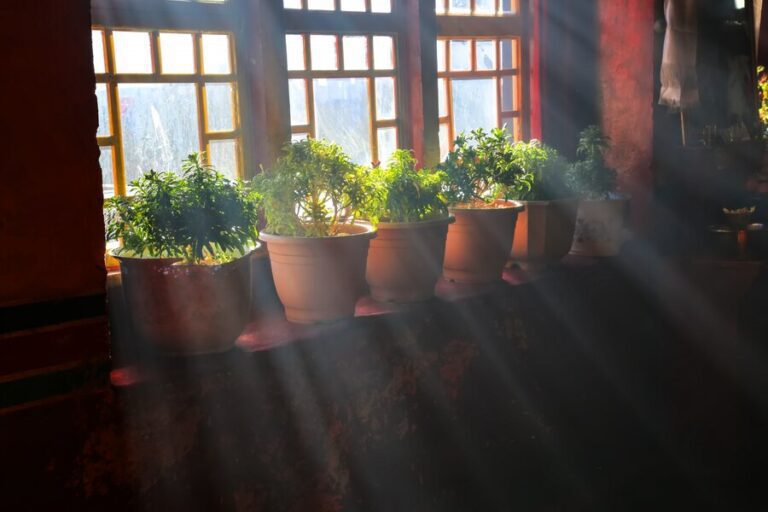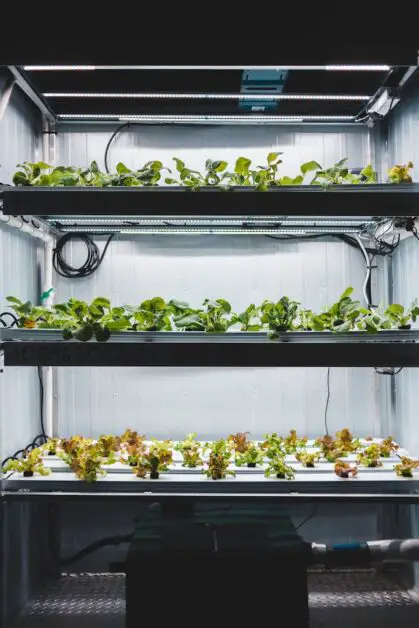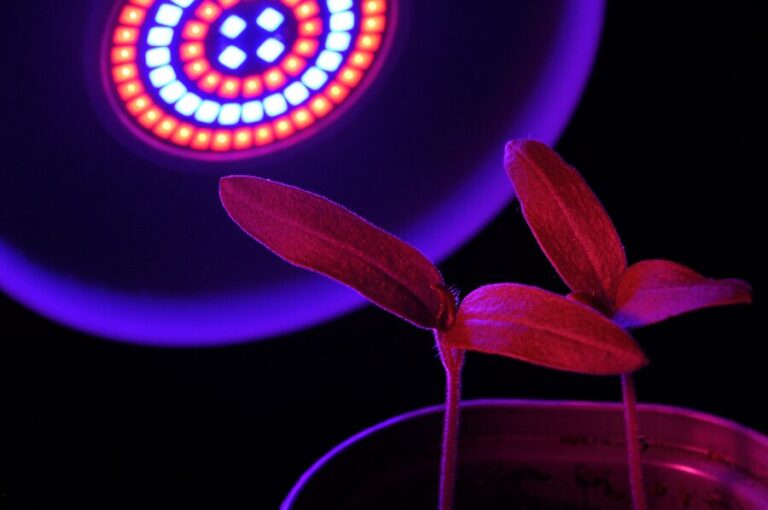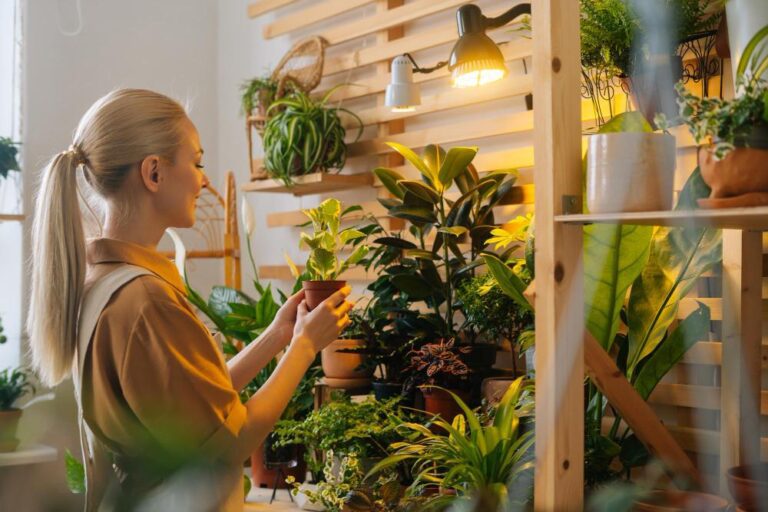When and How to Replace Grow Light Bulbs: A Guide to Keeping Your Grow Light Performance and Quality
Table of Contents
Grow Light Bulb Lifespan: Understanding the Average Lifespan of Grow Light Bulbs
Understanding the lifespan of grow light bulbs is essential for any indoor gardener. Grow light bulbs, just like any other type of bulb, have a finite lifespan, and their performance gradually deteriorates over time. The average lifespan of grow light bulbs can vary depending on several factors, such as the type of bulb, the quality of the bulb, and the hours of usage.
For traditional incandescent bulbs, the average lifespan typically ranges from 750 to 2,000 hours. On the other hand, compact fluorescent bulbs (CFLs) can last anywhere from 6,000 to 15,000 hours, making them a more durable option for indoor gardening. Lastly, high-intensity discharge (HID) bulbs, such as metal halide (MH) and high-pressure sodium (HPS) bulbs, can have a lifespan of approximately 10,000 to 24,000 hours.

While these figures provide a general estimate, it is important to note that the actual lifespan of your grow light bulbs can vary based on factors specific to your setup. Factors like the quality of the bulbs, the temperature and humidity of your grow room, and the amount of time the bulbs are operated each day can directly impact their longevity. It is crucial to monitor your grow light bulbs regularly and be aware of signs that indicate diminishing performance. This proactive approach will help you maintain optimal plant growth and yield, ensuring the success of your indoor gardening endeavors.
Signs of Diminishing Performance: How to Recognize When Your Grow Light Bulbs Need Replacing
Grow light bulbs play a crucial role in providing the necessary light spectrum for optimal plant growth in indoor gardening setups. Over time, these bulbs can experience diminishing performance, which can impact the health and productivity of your plants. Recognizing the signs of diminishing performance is essential to ensure that you replace your grow light bulbs in a timely manner.
One of the most common signs of diminishing performance is a decrease in light intensity. If you notice that your plants are not receiving the same vibrant and bright light they used to, it may be an indication that your grow light bulbs are losing their efficiency. Additionally, if your plants are not growing as vigorously or if you see signs of stunted growth, it could be a sign that your bulbs are no longer providing the necessary light spectrum and intensity.
Another indicator of diminishing performance is a change in the color temperature of your grow light bulbs. These bulbs are available in various color temperatures, ranging from cool white to warm white. If you notice a significant shift in the color output of your bulbs, it could suggest that they are nearing the end of their lifespan. It’s important to monitor the color temperature regularly to ensure that your plants are receiving the appropriate light for their growth stages.
By paying attention to these signs of diminishing performance, you can stay proactive in replacing your grow light bulbs when needed, ensuring that your plants continue to thrive in an indoor gardening environment. Stay tuned for more information on the importance of replacing bulbs in a timely manner and factors affecting grow light bulb lifespan in the upcoming sections.
Importance of Replacing Bulbs in a Timely Manner: Maintaining Optimal Plant Growth and Yield
Regular replacement of grow light bulbs is essential for maintaining optimal plant growth and yield in indoor gardening setups. As grow light bulbs age, their performance gradually diminishes, resulting in reduced light output. This decrease in light intensity can have a significant impact on plant photosynthesis and overall productivity. The timely replacement of bulbs ensures that plants receive the necessary light energy to carry out photosynthesis efficiently, leading to healthier and more vigorous growth.

Furthermore, the lifespan of grow light bulbs is closely related to their spectrum integrity. Over time, bulbs may shift in their spectral output, which can affect plant development. For example, if the bulb’s spectrum becomes imbalanced or skewed, it may result in altered flowering patterns or hinder specific growth stages. By replacing bulbs in a timely manner, gardeners can maintain the desired light spectrum, allowing plants to thrive and produce the best possible yields.
Factors Affecting Grow Light Bulb Lifespan: Understanding the Variables That Determine Longevity
Factors Affecting Grow Light Bulb Lifespan: Understanding the Variables That Determine Longevity
When it comes to the lifespan of grow light bulbs, several factors come into play. Understanding these variables is crucial for maximizing the longevity and efficiency of your grow lights.
One significant factor that affects grow light bulb lifespan is the quality of the bulb itself. Higher-quality bulbs tend to have a longer lifespan compared to cheaper alternatives. This is because reputable manufacturers invest in superior materials and manufacturing processes, resulting in bulbs that can withstand prolonged use and provide consistent light output.
Another determinant of bulb lifespan is the operating temperature. Grow lights generate heat while in use, and excessive heat can significantly shorten the bulb’s lifespan. It is essential to ensure proper ventilation and cooling in your growing space to prevent the bulbs from overheating. Additionally, some grow light systems come with built-in cooling mechanisms or fans to help regulate temperature and prolong bulb life.
Furthermore, the duration of daily use is a crucial aspect to consider. The more hours a grow light bulb operates per day, the faster it will decline in performance. While it is tempting to keep the lights on for longer periods to accelerate plant growth, it is vital to strike a balance to avoid premature bulb failure. Timers can be a valuable tool to ensure that your grow lights receive the appropriate amount of daily usage.
Lastly, the type of lighting technology employed in the grow light bulb can play a role in its longevity. Different types of bulbs, such as fluorescent, LED, and HID, have varying lifespans. LED bulbs, for example, are known for their long lifespan and energy efficiency, making them an increasingly popular choice among growers.
By understanding these variables, you can make informed choices when selecting and using grow light bulbs, ultimately maximizing their lifespan and ensuring optimal plant growth in your indoor garden.
Regular Maintenance: Tips and Best Practices for Extending the Lifespan of Your Grow Light Bulbs
Regular maintenance is crucial for extending the lifespan of your grow light bulbs and ensuring optimal performance for your plants. By following a few simple tips and best practices, you can maximize the longevity and efficiency of your bulbs.
Firstly, it is important to regularly clean your grow light bulbs to remove any build-up of dust or debris. This can be done using a soft cloth or a gentle brush to avoid damaging the bulb’s surface. Cleaning not only helps to improve light output but also prevents overheating, which can significantly reduce the lifespan of the bulb.
Additionally, proper ventilation is essential for maintaining the health and longevity of your grow light bulbs. Make sure that the bulbs have enough airflow and are not obstructed by any plants, equipment, or other objects. Adequate ventilation helps to dissipate heat and prevents the bulbs from overheating, thereby reducing the risk of premature failure.
Regularly inspecting your bulbs for any signs of wear or damage is also an important maintenance practice. Look out for any chips, cracks, or discoloration on the bulb’s surface, as these can indicate potential issues that may affect its performance. If you notice any such problems, it is advisable to replace the bulb promptly to prevent further damage and ensure consistent light output.
Remember, taking proactive steps in maintaining your grow light bulbs can not only extend their lifespan but also contribute to better plant growth and yield in your indoor garden.
Choosing the Right Replacement Bulbs: Factors to Consider When Selecting New Grow Light Bulbs
When selecting replacement grow light bulbs, there are several important factors to consider to ensure optimal plant growth and yield. The first factor to keep in mind is the light spectrum emitted by the bulb. Different plants have varying requirements for light wavelengths, so it’s crucial to choose a bulb that matches the specific needs of your plants. Some bulbs, such as fluorescent and LED lights, offer adjustable spectrums, allowing you to customize the lighting conditions according to your plants’ growth stages.
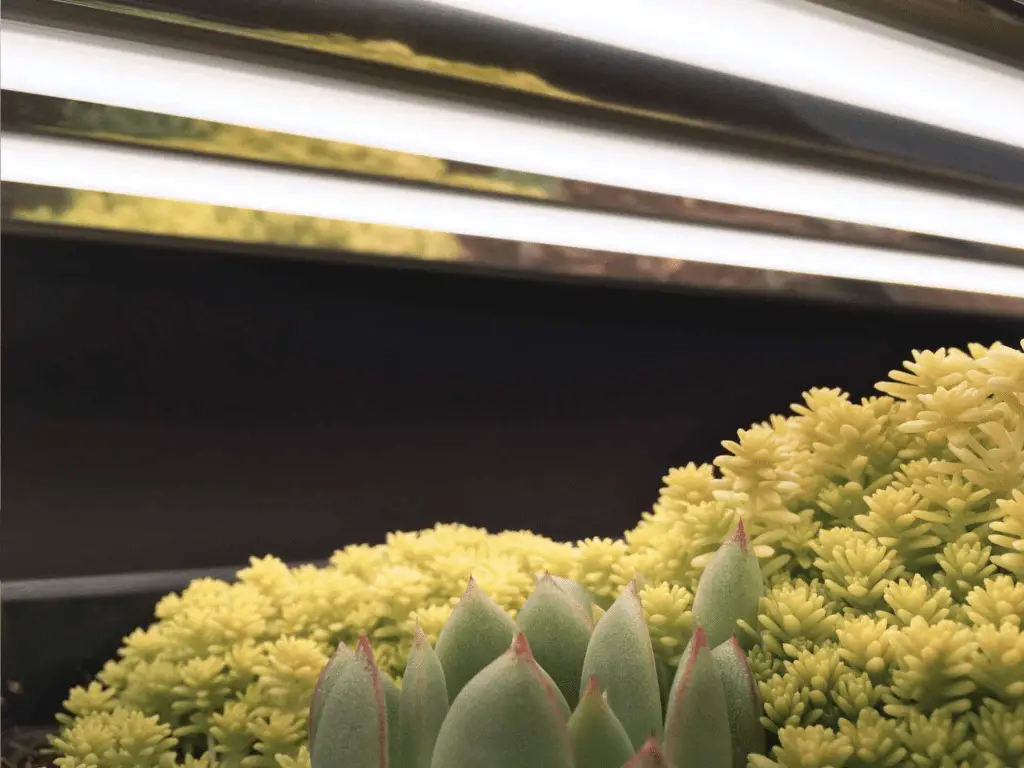
Another factor to consider is the wattage of the bulb. The wattage will determine the intensity of the light emitted, and it should be chosen based on the size of your growing area and the light requirements of your plants. Keep in mind that higher wattages may result in increased energy consumption, so it’s important to strike a balance between efficiency and light intensity. Additionally, consider the lifespan of the bulb. LED lights generally have a longer lifespan compared to other types of grow light bulbs, which can result in cost savings over time. Don’t forget to check the manufacturer’s specifications for the estimated lifespan of the bulb to ensure you’re making a wise investment. By carefully considering these factors, you can choose the right replacement grow light bulbs that will provide your plants with the optimal lighting conditions for healthy growth and abundant yields.
• Light spectrum: Choose a bulb that matches the specific light wavelength requirements of your plants
– Some bulbs offer adjustable spectrums for customization according to growth stages
• Wattage: Consider the intensity of light emitted and choose based on growing area size and plant requirements
– Balance efficiency and light intensity to manage energy consumption
• Lifespan: LED lights generally have a longer lifespan, resulting in cost savings over time
– Check manufacturer’s specifications for estimated lifespan before making a purchase
Understanding Different Types of Grow Light Bulbs: Which Bulb Is Best for Your Specific Needs?
When it comes to choosing the right grow light bulb for your specific needs, there are a few key factors to consider. Different types of grow light bulbs offer varying levels of light intensity and color spectrum, which play a crucial role in plant growth and development.
One popular option is the fluorescent grow light bulb. These bulbs are known for their energy efficiency and affordability. They emit a balanced spectrum of light that is suitable for a wide range of plants, making them a versatile choice for indoor gardening. However, fluorescent bulbs may not provide enough light intensity for plants that require high levels of brightness.
On the other hand, high-intensity discharge (HID) grow light bulbs offer a powerful light output, making them ideal for plants that require intense light, such as fruiting and flowering varieties. HID bulbs come in two main types: metal halide (MH) and high-pressure sodium (HPS). MH bulbs emit a cool, blue spectrum that promotes vegetative growth, while HPS bulbs produce a warm, red spectrum that enhances flowering and fruiting stages.
Ultimately, the best choice of grow light bulb depends on the specific needs of your plants. Consider factors such as the light intensity required, the growth stage of your plants, and your budget when making your decision.
Step-by-Step Guide to Replacing Grow Light Bulbs: Ensuring a Seamless Transition in Your Grow Room
When it comes to replacing grow light bulbs in your grow room, following a step-by-step guide can ensure a seamless transition and minimize any disruption to your plants’ growth. The first step is to turn off the power supply to the grow lights and unplug them from the socket. This is crucial for your safety and to prevent any electrical mishaps during the replacement process.
Next, carefully remove the old bulbs from their fixtures. It’s important to handle them with care and avoid exerting too much pressure, as they can be delicate. If the bulbs are still hot from being used, allow them to cool down before attempting to remove them. Once the old bulbs are removed, take this opportunity to clean the fixtures or dust off any debris that may have accumulated. This can help optimize light distribution in your grow room and ensure your plants receive the appropriate illumination.
When it comes to selecting new bulbs, it’s essential to choose the right ones for your specific needs. Consider factors such as the type of plants you are cultivating, the light spectrum required for their growth stage, and the overall wattage necessary. Match these requirements with the specifications of available grow light bulb options on the market. Ensure that the replacement bulbs are compatible with your existing fixtures to avoid any compatibility issues.
Proper Handling and Disposal of Old Bulbs: Following Environmental and Safety Guidelines
Proper handling and disposal of old bulbs is essential to ensure environmental sustainability and protect human health. When it comes to disposing of old grow light bulbs, it is important to follow specific guidelines to minimize any potential negative impacts.
One of the first steps is to turn off and unplug the grow light before handling the bulb. This helps prevent any accidental electric shocks or damage. It is also advisable to wear protective gloves to avoid any contact with harmful substances like mercury, which some types of bulbs may contain.

When it comes to disposal, it is crucial to check local regulations as they may vary. Many areas have designated recycling centers or hazardous waste facilities where old bulbs can be safely dropped off. Some stores and manufacturers also offer take-back programs, allowing consumers to return their used bulbs for proper recycling or disposal. Proper handling and disposal of old bulbs not only protects the environment but also helps maintain our own well-being, ensuring that harmful substances are handled responsibly and do not pose a risk to human health or contaminate our ecosystems.
Monitoring Light Output: How to Gauge When Your New Bulbs Are Performing at Their Best
When it comes to monitoring light output from your new grow light bulbs, it is essential to have a clear understanding of how to gauge their performance. One of the most effective ways to assess this is by regularly measuring the light intensity and spectrum emitted by the bulbs. This can be done using a light meter or a spectrometer, which will provide you with accurate readings and valuable data.
Light intensity, measured in units such as foot-candles or lux, indicates the amount of light reaching your plants. Different plant species have varying light requirements, so it is crucial to ensure that the light intensity matches their needs. By regularly monitoring and adjusting the distance between your plants and the grow light bulbs, you can maintain optimal light levels and prevent issues such as light burn or insufficient light for growth. Additionally, keeping track of light intensity allows you to identify any potential decline in bulb performance over time, enabling you to replace them promptly and maintain consistent plant growth.
| Aspect | How to Gauge |
|---|---|
| Brightness | Use a light meter to measure the illuminance in lux or foot-candles. Compare the readings with the bulb’s specified lumens. |
| Color Temperature | Use a color temperature meter to ensure the bulb’s light matches the specified color temperature (e.g., 2700K for warm white). |
| Uniformity of Light | Observe the distribution of light in the room. Ensure there are no dark spots or areas with significantly lower illumination. |
| Flicker and Strobe | Use a smartphone app or specialized equipment to check for flicker or strobing, which can impact visual comfort and health. |
| Energy Consumption | Monitor the electricity usage of the bulb using a power meter and compare it with the manufacturer’s energy efficiency claims. |
| Life Expectancy | Keep track of the bulb’s lifespan by noting the date of installation and monitoring when it eventually fails. This helps assess longevity. |
| Dimming Performance | Test the bulb’s dimming capabilities with compatible dimmer switches. Check for smooth dimming without flickering, buzzing, or sudden shut-offs. |
| CRI (Color Rendering Index) | Evaluate the CRI to ensure the bulb accurately represents colors. Higher CRI values indicate better color rendering, especially important in areas like art studios. |
Preventive Measures: Strategies to Minimize the Frequency of Bulb Replacement
To minimize the frequency of bulb replacement and keep your grow lights performing optimally, there are several preventive measures you can take. First and foremost, it’s crucial to properly clean and maintain your grow light bulbs on a regular basis. Dust and dirt accumulation on the surface of the bulbs can significantly decrease their efficiency and shorten their lifespan. Use a soft microfiber cloth or a specialized bulb cleaning brush to gently remove any dirt or debris.
In addition to regular cleaning, it is important to provide adequate ventilation for your grow lights. Excessive heat buildup can cause bulbs to burn out more quickly. Ensure that your grow room has proper air circulation and use fans or other cooling methods to maintain an optimal temperature. By keeping the bulbs cool, you can extend their lifespan and reduce the need for frequent replacements.
Troubleshooting Common Issues: Addressing Problems That May Arise with Grow Light Bulbs
When it comes to using grow light bulbs for indoor gardening, there may be times when you encounter common issues that can affect their performance. Understanding these problems and knowing how to address them is essential in order to maintain optimal plant growth and yield. One common issue that may arise with grow light bulbs is a decrease in light output. This can be caused by a variety of factors such as bulb age, poor maintenance, or improper usage. To troubleshoot this problem, first, check the age of the bulb and consider replacing it if it has reached its average lifespan. Additionally, ensure that the bulb is properly cleaned and free from dust and debris, as buildup can reduce light output. If the issue persists, it may be necessary to examine other components of your grow light system such as the ballast or reflector, as these can also contribute to diminished performance. By addressing and resolving these common issues, you can maintain the efficiency and effectiveness of your grow light bulbs.
Expert Tips and Recommendations: Insights from Seasoned Growers on Bul
Insights from seasoned growers can be invaluable when it comes to maximizing the lifespan and performance of your grow light bulbs. These experts have spent years honing their craft and have discovered effective strategies for maintaining optimal plant growth and yield. Here are a few tips and recommendations from experienced growers that can help you get the most out of your grow light bulbs:
1. Choose the right bulbs for your specific needs: Different types of grow light bulbs offer varying spectrums of light, which can affect plant growth in different ways. Consider the specific requirements of your plants, such as the stage of growth, and select bulbs that provide the ideal light spectrum for their needs.
2. Maintain a regular cleaning schedule: Over time, dust and dirt can accumulate on the surface of grow light bulbs, reducing their ability to emit light efficiently. Regularly cleaning your bulbs, following manufacturer guidelines, can help maintain their performance and extend their lifespan.
How often should grow light bulbs be replaced?
The average lifespan of grow light bulbs can vary, but it is generally recommended to replace them every 6,000 to 10,000 hours of use to maintain optimal performance.
What are some signs that indicate grow light bulbs need replacing?
Diminished light output, discoloration of the bulbs, or noticeable flickering are common signs that grow light bulbs need to be replaced.
Why is it important to replace grow light bulbs in a timely manner?
Replacing bulbs in a timely manner ensures that your plants receive the necessary light to thrive and maximize their growth and yield potential.
What factors can affect the lifespan of grow light bulbs?
Factors such as the quality of the bulbs, operating conditions (temperature and humidity), and regular maintenance can impact the lifespan of grow light bulbs.
How can I extend the lifespan of my grow light bulbs?
Regularly cleaning the bulbs, providing proper ventilation, avoiding excessive heat, and following manufacturer’s guidelines for maintenance can help extend the lifespan of grow light bulbs.
What should I consider when selecting replacement grow light bulbs?
Factors to consider include the type of plants being grown, the desired light spectrum, energy efficiency, and the wattage and size of the bulbs compatible with your grow light system.
What are the different types of grow light bulbs available?
Different types of grow light bulbs include fluorescent, LED, metal halide, and high-pressure sodium bulbs, each offering unique benefits and varying light spectrums.
How do I properly handle and dispose of old grow light bulbs?
It is important to follow environmental and safety guidelines when handling and disposing of old grow light bulbs, such as wearing gloves, using proper packaging for disposal, and recycling them at designated collection points.
How can I monitor the light output of my new grow light bulbs?
Using a light meter or lux meter can help gauge the light output and ensure that your new bulbs are performing at their best.
What preventive measures can I take to minimize the frequency of bulb replacement?
Regularly cleaning the bulbs, providing optimal growing conditions, following maintenance guidelines, and using quality bulbs can help minimize the need for frequent replacement.
What are some common issues with grow light bulbs and how can I troubleshoot them?
Common issues include ballast failures, bulb burnouts, and uneven light distribution. Troubleshooting strategies may involve checking connections, replacing faulty ballasts, or adjusting the positioning of the bulbs.
What are some expert tips and recommendations from seasoned growers on grow light bulbs?
Seasoned growers may recommend investing in high-quality bulbs, using a combination of different light types, adjusting lighting schedules based on plant growth stages, and keeping spare bulbs on hand for quick replacements.

Pallavi Gupta is a burgeoning writer at SouthElMonteHydroponics, blending her passion for data analysis with a keen interest in biotechnology. Currently pursuing a Bachelor’s in Biotechnology at Amity University, Pallavi delves into the intricacies of life sciences while gaining hands-on experience in the exciting world of data analysis. Her unique background provides a fresh perspective on hydroponic farming, as she explores the intersection of biotechnology and sustainable agriculture. Through her writing, Pallavi aims to bridge the gap between data-driven insights and innovative farming practices, inspiring others to harness technology for a greener future.

